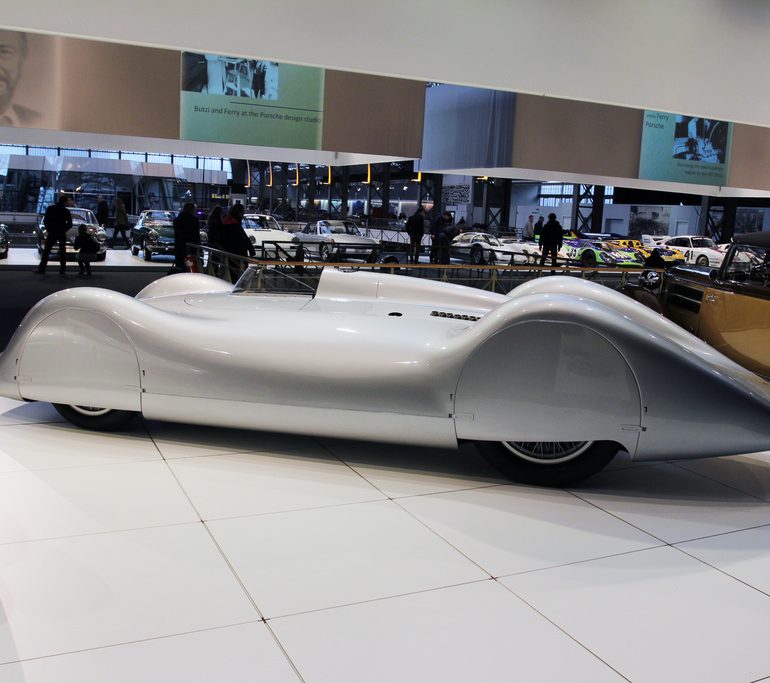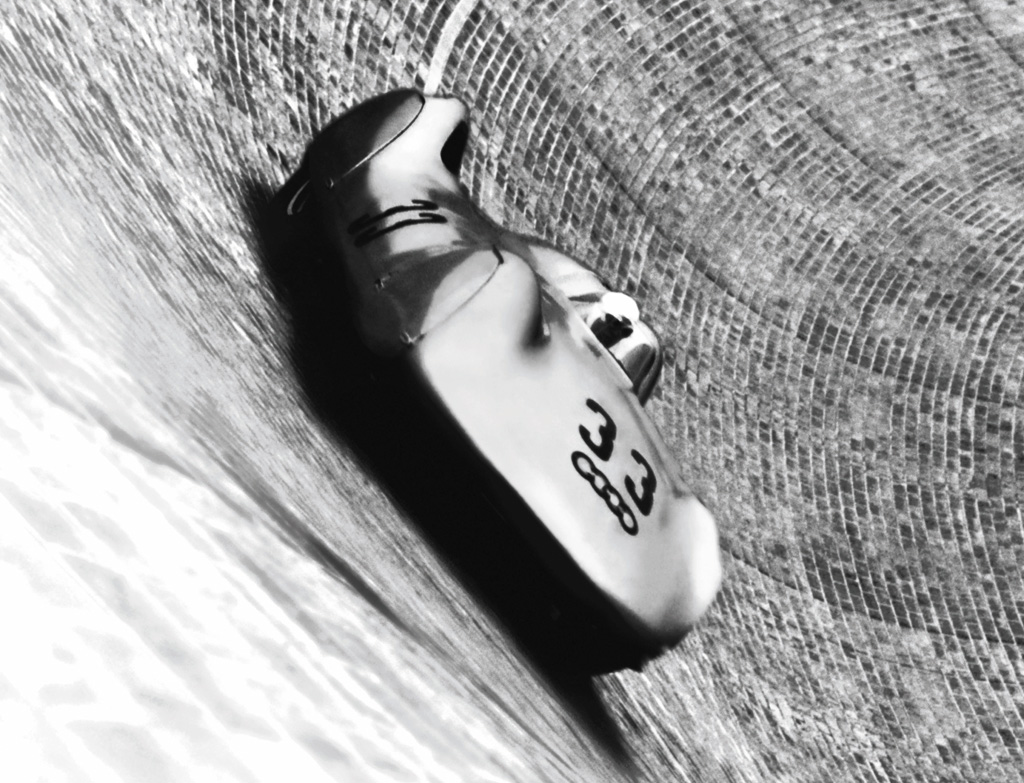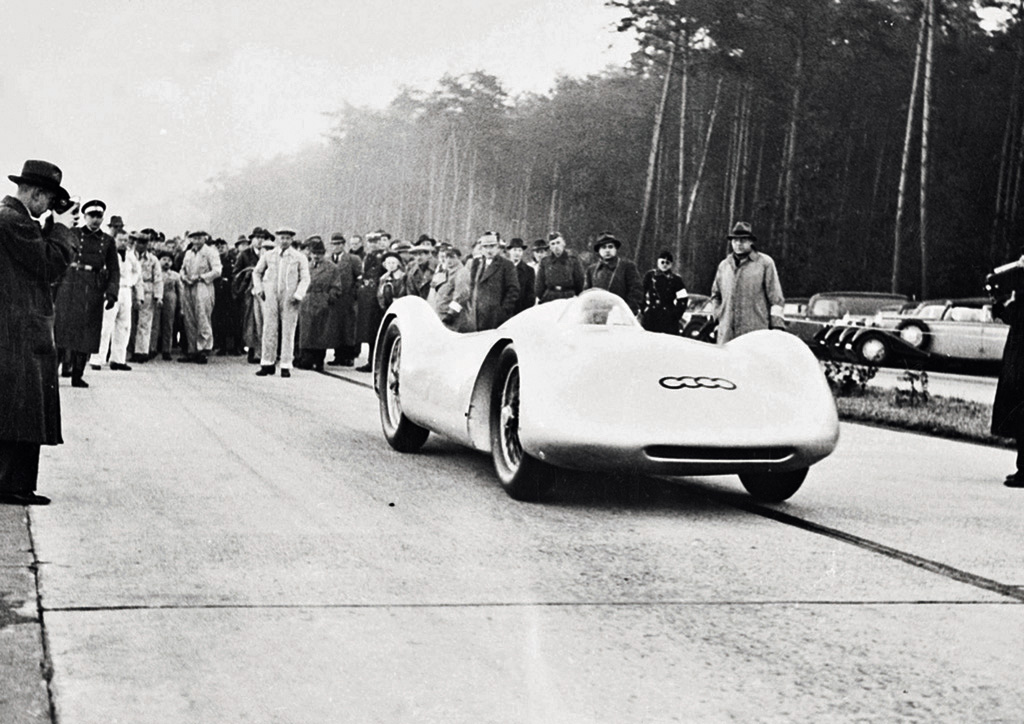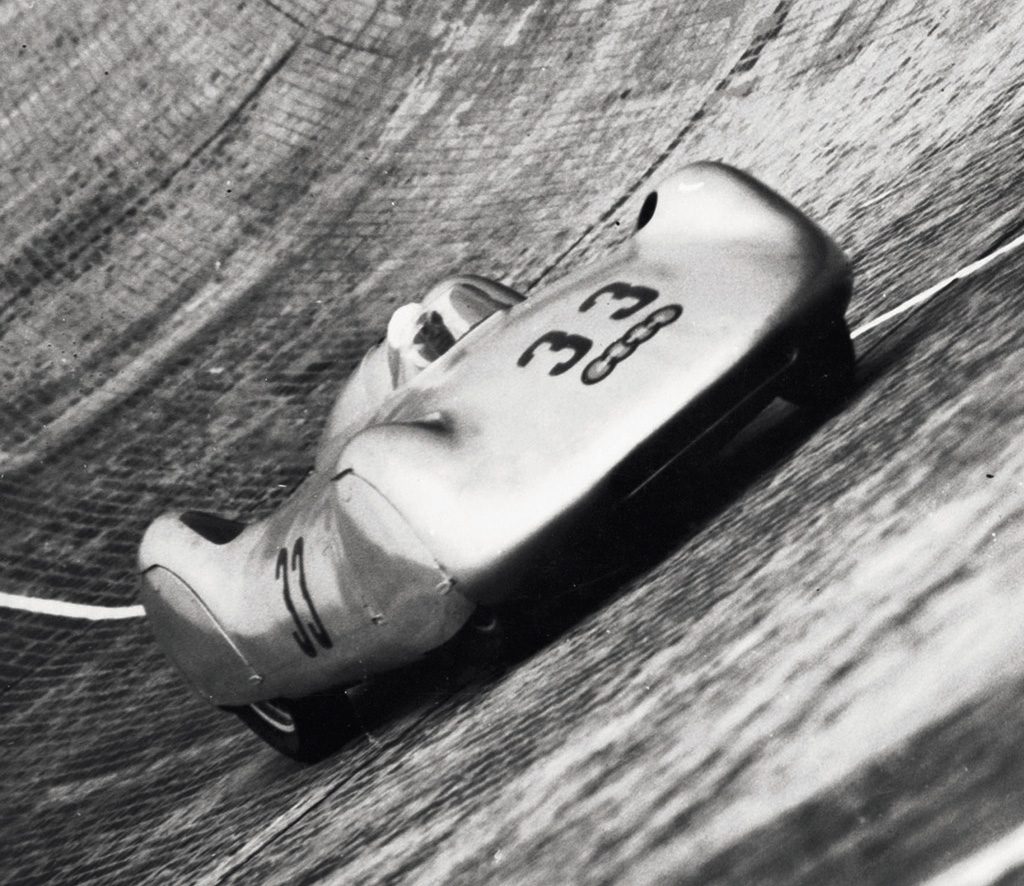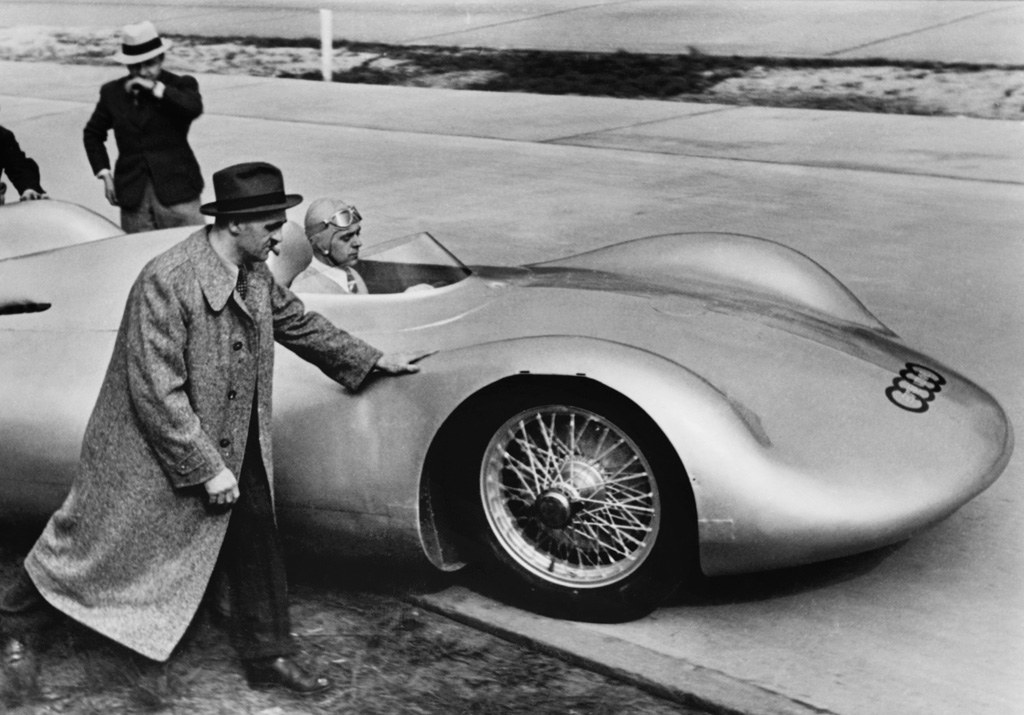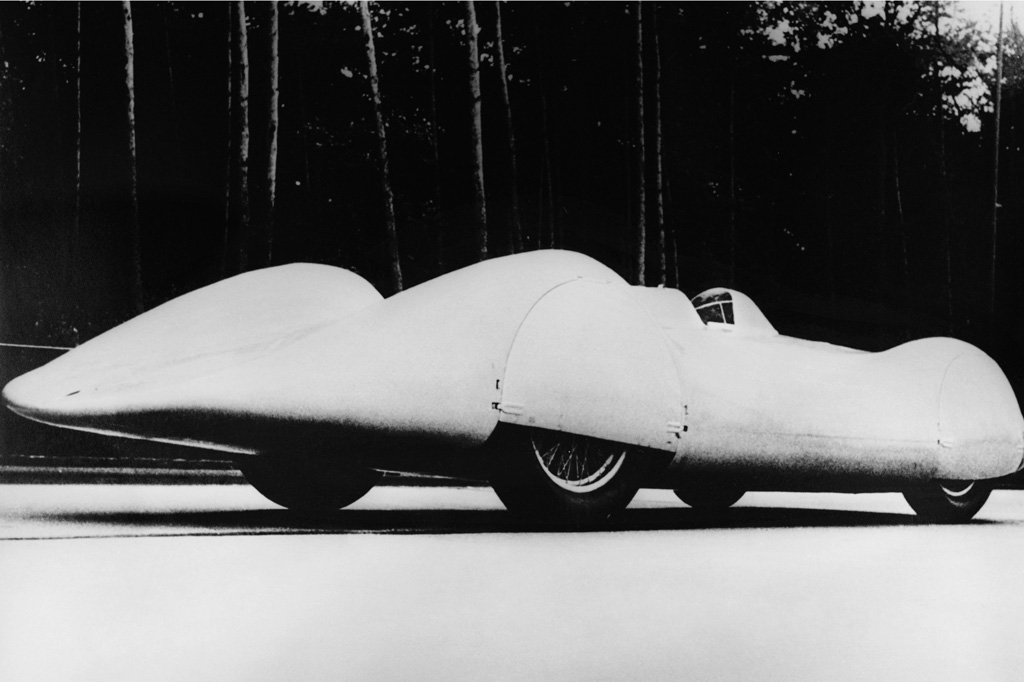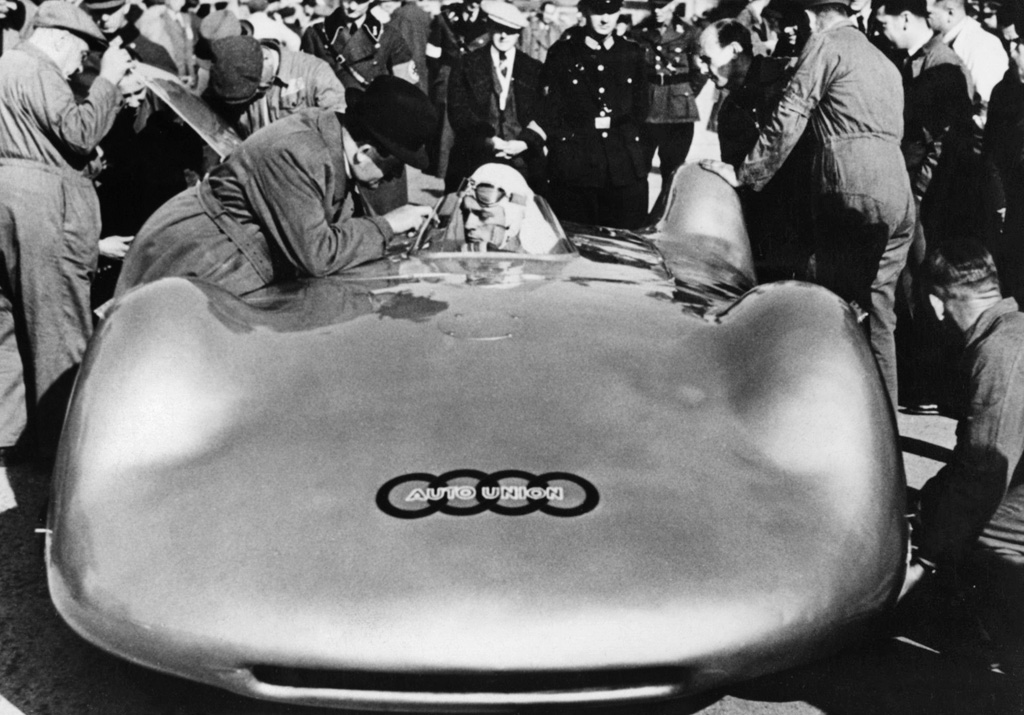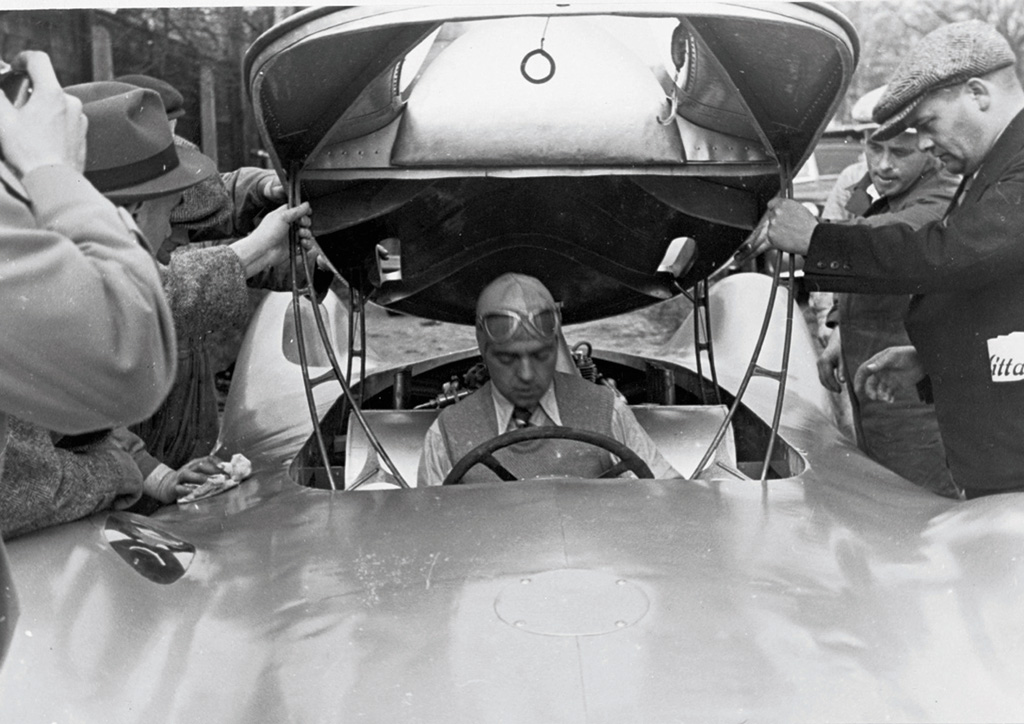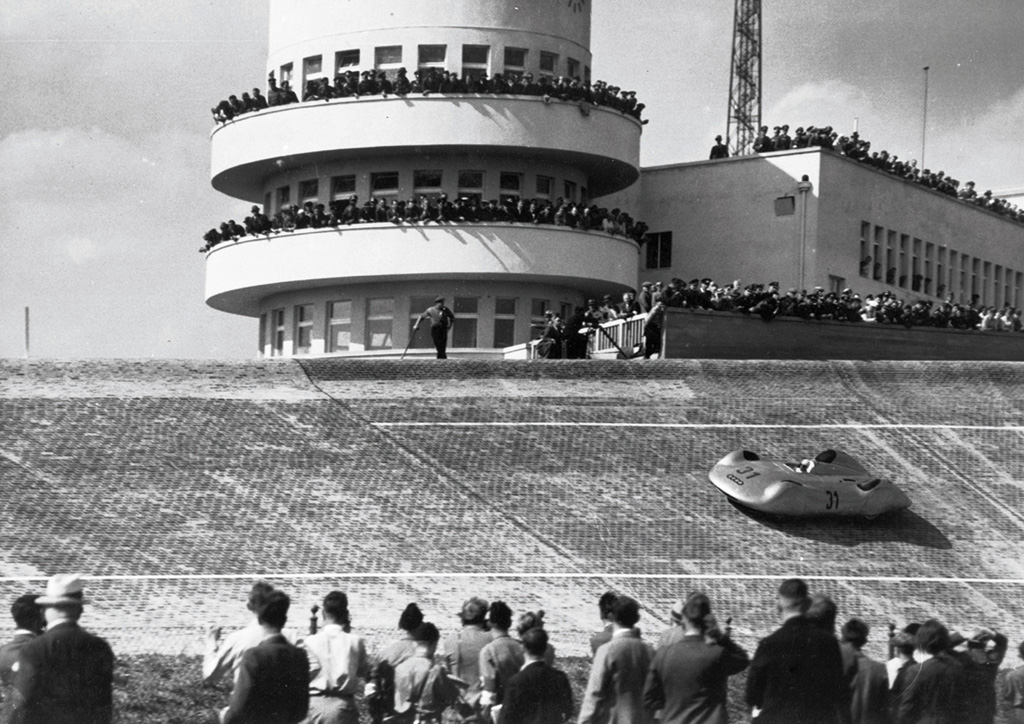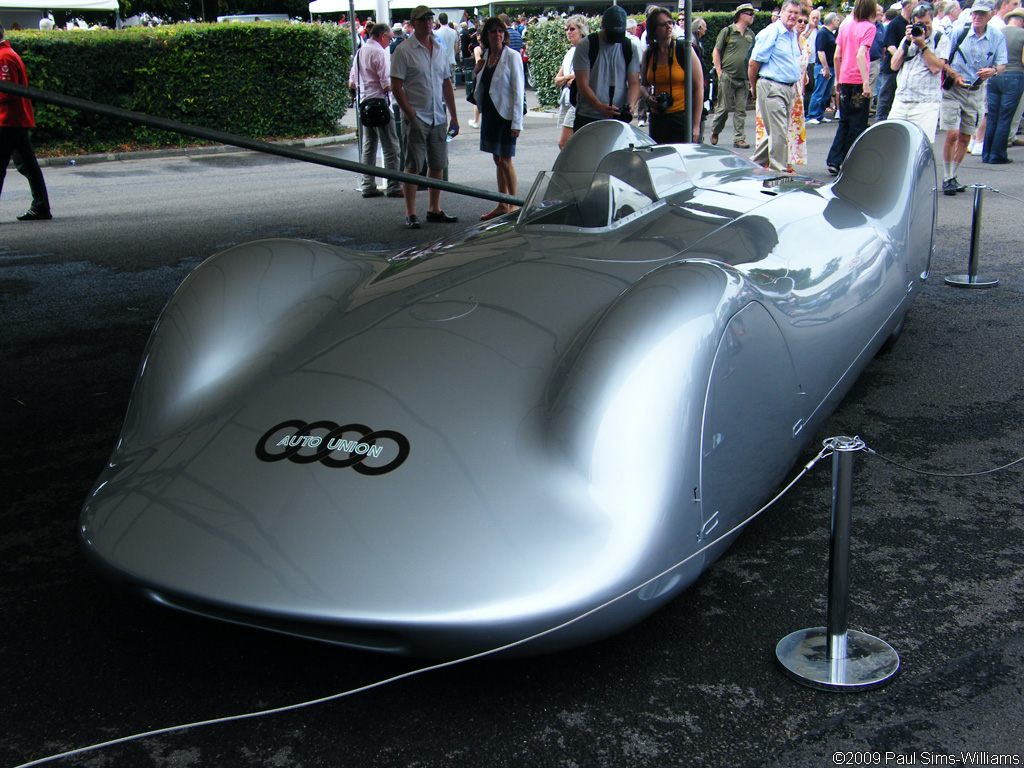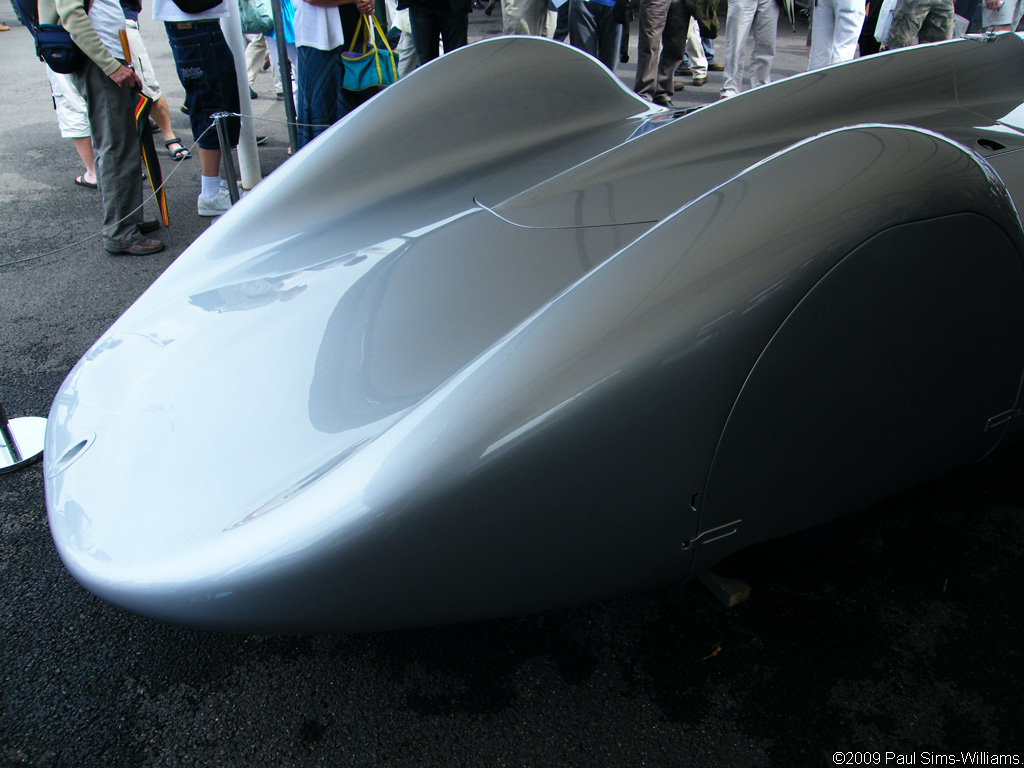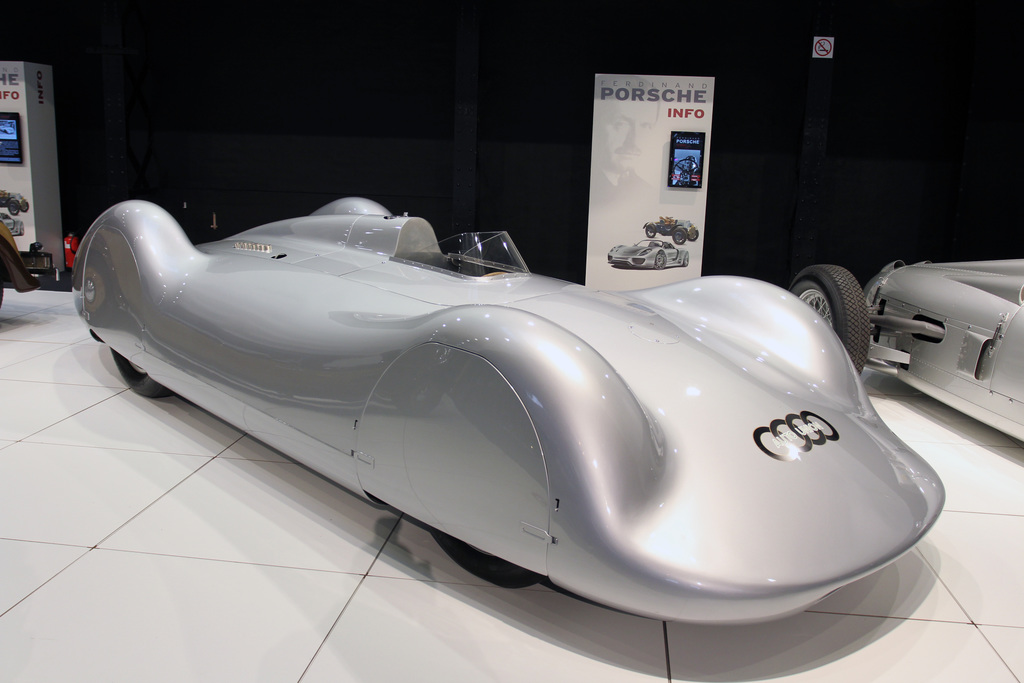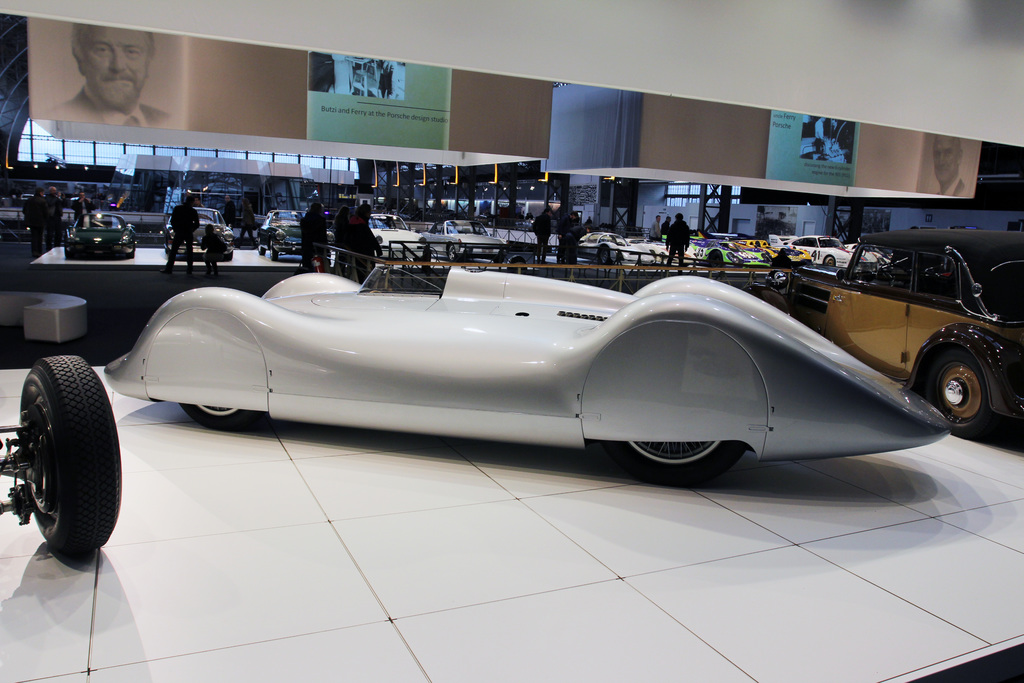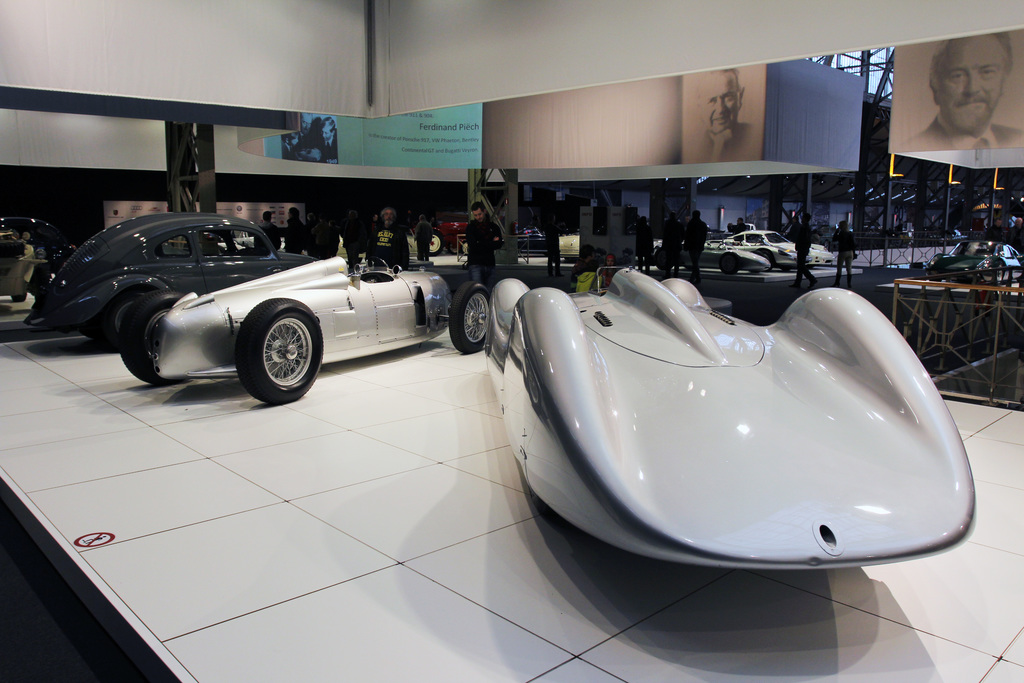1937 Auto Union Typ C Stromlinie
The evocative shape of the streamlined Typ C must have caused a sensation in 1937. Afterward, and especially in the post war period, the curves of this car found their way onto production cars. That’s because this Auto Union was specially shaped for top speed on the Avus circuit near Berlin. At the time, it was the fastest track in the world.
In 1937, Avus was facing competition from the Norisring in Nuremberg. To garner more attention, the Avus’ simple layout was extended to include a high speed 43° banked turn made from brick. This launched right onto the main straight, letting cars reach nearly 248.40 mph (400 kph).
The Internationales Avus Rennen main event was held and the organizers invited record-breaking cars from both Auto Union and Mercedes-Benz. Both companies developed their cars thoroughly and did multiple tests on Avus before the race. At the time, Avus was ultimate race track and also the most dangerous. Since there was no fence at the top of the curve, it got nicknamed the ‘Wall of Death’. This didn’t stop 18 brave drivers from entering the race and 300,000 to 400,000 people showed up for the fastest pre-war race ever run.
The race was split into three seven-lap sprints with grids of only six or eight cars. Four streamliners were included and evenly simple split between Mercedes and Auto Union. They raced alongside the regular-season Grand Prix cars. Naturally, the Streamliners had a distinct advantage on the two long straights at Avus but the GP cars had the edge on the joining curves. At the start, Caracciola in the Mercedes and Rosemeyer in the Auto Union had a great battle. This lasted until the last lap when they were side-by-side. In the end Caracciola won just 0.7 seconds in front of Rosemeyer.
The second heat was much faster, with Brauchitsch and Fagioli in dueling streamliners. Fagioli retired with transmissions problems which left Von Brauchitsch and Mercedes the easy win. The other Mercedes-Benz Streamliner of Herman Lang suffered a tire failure at speed and Lang was lucky to keep the car straight enough to survive.
The third and final heat decided the overall victor with a combined group from the first two races. Four Streamliners were entered Brauchitsch, Caracciola and Lang in Mercedes against Rosemeyer in the Auto Union. He didn’t stand a chance since his V16 was only running on 13 cylinders and he was well outnumbered. Eventually, Lang went on the win entire event. This would be the only time someone would score a victory using the full track, as it was deemed to dangerous to repeat in 1938.
By 1937, Auto Union had been actively making streamlined record cars for three years. Their first attempt was with a long-tail Typ A and later a striking Rekordwagen Typ Lucca Coupe was made. Auto Union might have considered using these designs in a a normal Grand Prix race, but this never happened. A streamlined Typ D did show up at Reims for the 1938 French GP but crashed heavily during practice. This car might have had a shorter tail than the record car pictured above.
Unfortunately, the only record of these cars exists in pictures. A replica of 1937 Avus car was made to exact specification for Audi Tradition.
Sources & Further Reading
1.Snellman, Leif. ‘The Golden Era.’ www.kolumbus.fi/leif.snellman/.
2.Monkhouse, George. Mercedes-Benz Grand Prix Racing 1934-1955″. White Mouse Editions.
In Detail
| related cars | 1937 Mercedes-Benz W25 Avus Stromlinie |
| type | Record Car |
| built at | Zwickau, Germany |
| production | 2 |
| engine | V16 |
| position | Roots Supercharged |
| aspiration | Mid Longitudinal |
| valvetrain | SOHC 2 Valves / Cy |
| displacement | 6006 cc / 366.51 in³ |
| bore | 75 mm / 3.0 in |
| stroke | 85 mm / 3.3 in |
| compression | 9.2:1 |
| power | 387.8 kw / 520 bhp @ 5000 rpm |
| specific output | 86.58 bhp per litre |
| body / frame | Aluminum Body over Steel Chassis |
| driven wheels | RWD |
| front brakes | Lockheed Drums |
| rear brakes | Lockheed Drums |
| steering | Worm and Rocker Shaft |
| f suspension | Trailing Links w/Torsion Bars |
| r suspension | Swing Axle w/Torsion Bars |
| top speed | ~400 kph / 248.40 mph |
| key drivers | Bernd Rosemeyer |


